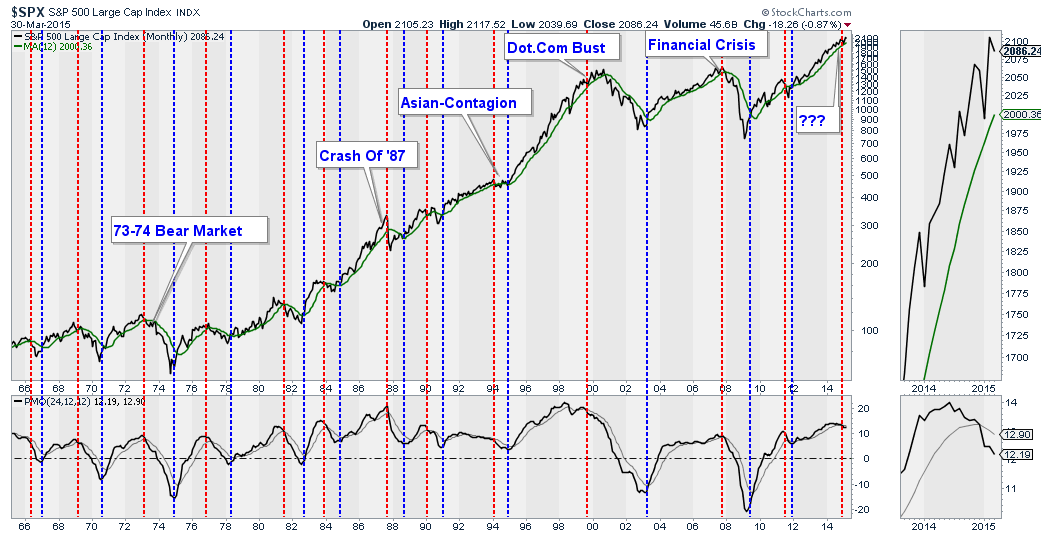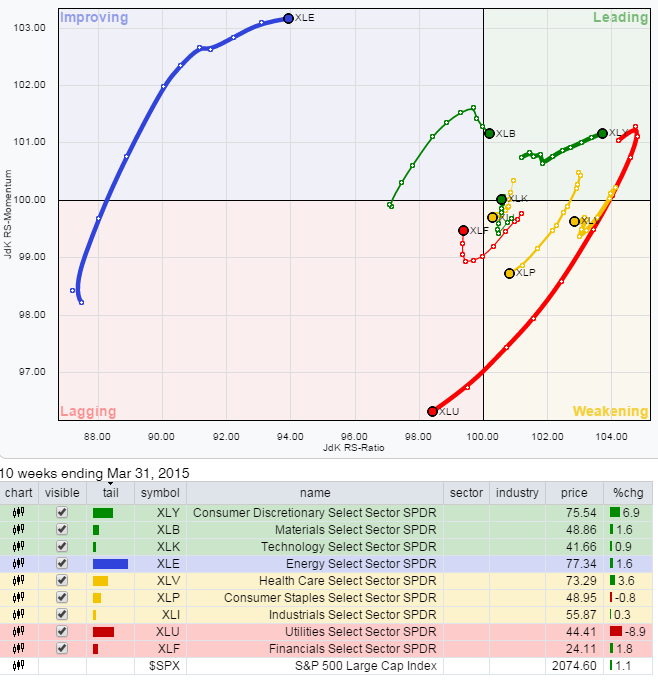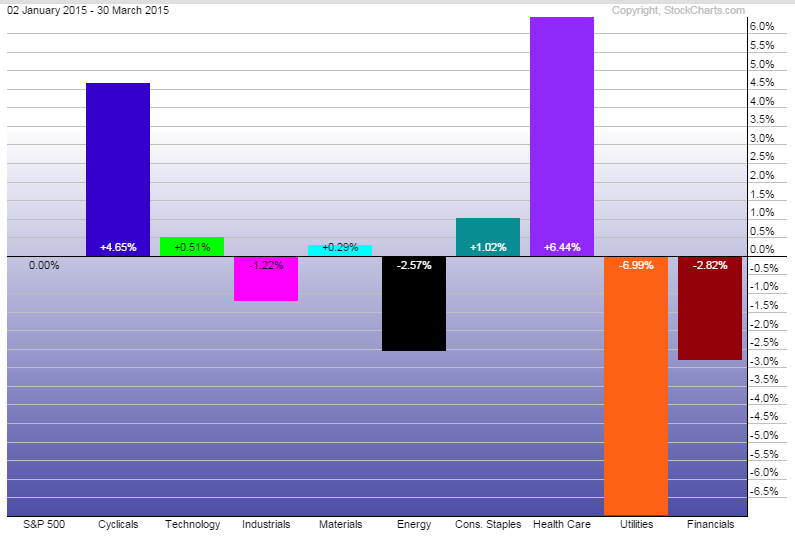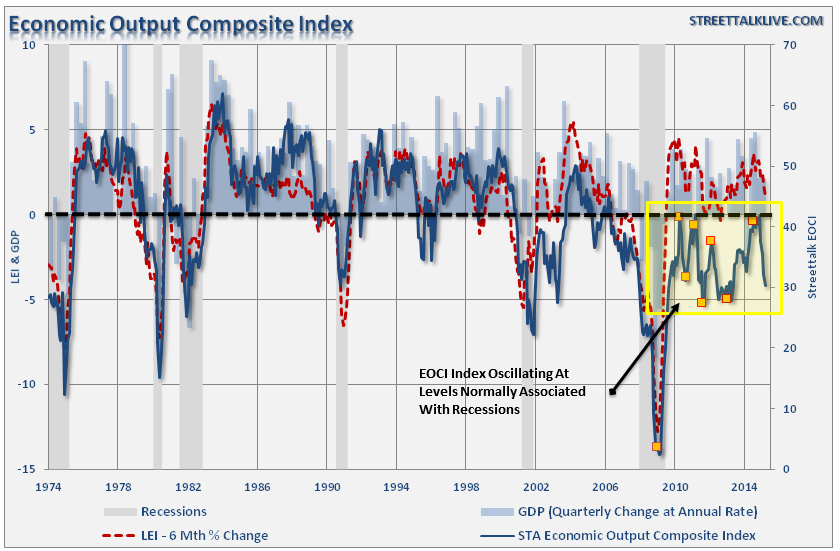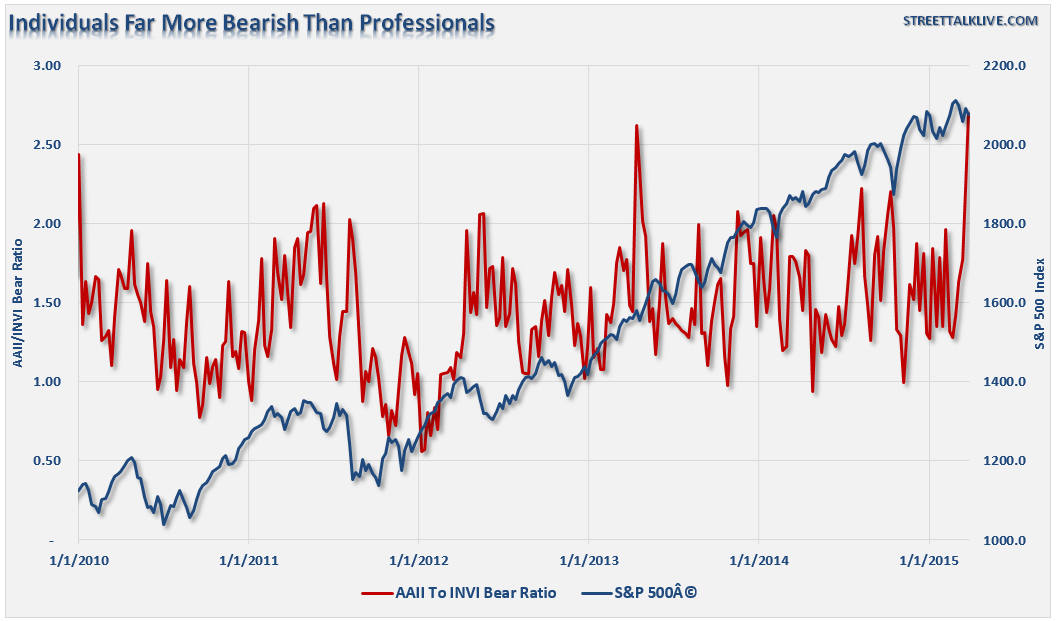A few weeks ago I discussed the importance of price momentum as an important component of portfolio management particularly in the late stages of a market advance when "investor exuberance" begins to overtake value based measures. To wit:
"The effect of momentum is arguably one of the most pervasive forces in the financial markets. Throughout history, there are episodes where markets rise, or fall, further and faster than logic would dictate. However, this is the effect of the psychological, or behavioral, forces at work as “greed” and “fear” overtake logical analysis.
There have been many studies published that have shown that relative strength momentum strategies, in which as assets’ performance relative to its peers predicts its future relative performance, work well on both an absolute or time series basis. Historically, past returns (over the previous 12 months) have been a good predictor of future results."
The chart below, which is a monthly analysis of the S&P 500 versus its 12-month moving average, shows that the above statement is true. When the S&P 500 is trading above its 12-month moving average forward returns have continued to be primarily positive and vice versa. The Price Momentum Oscillator (PMO) at the bottom confirms substantially the same. However, as seen in late 1999, the PMO triggered a sell signal while the markets continued to trade above its 12-MMA. It was several months later before the market failed and began a serious mean reversion event.
It is also interesting to note that within the S&P 500 index itself, the number of sectors leading the overall index higher has been substantially reduced. The chart below shows the relative strength of each of the S&P 500 sectors relative to the S&P 500 index itself.
Over the last 10 weeks, only the discretionary, materials and technology sectors have been substantially supporting the market along with some improving support from energy shares. The push higher in energy stocks, despite continued deterioration in oil prices, is more than likely a fairly short-term oversold bounce that will lead to a further decline in the months ahead particularly as we enter into the summer months.
We can more clearly see the internal deterioration of the market during the first quarter of this year as compared to the first quarter of 2014.
Then (2014):
Now (YTD):
We can also see much of the same deterioration in the current price momentum of the market by looking specifically at each sectors performance relative to the S&P 500 versus the 12-month moving average. The green blocks denote sectors that are currently still above the 12-MMA, the blue box denotes a warning of changing momentum and the yellow box is where momentum, has gone negative.
While the market continues to hold onto its overall bullish trend for now, the deterioration in underlying price momentum suggests some caution for now.
There is a high probability that after two straight quarters of weaker economic data an inventory restocking cycle, not unlike what was seen in Q2 and Q3 of last year, will take hold. This will likely lead to optimism once again that an economic recovery is finally arrived, and corporate profits should see some recovery. However, this will be a temporary bounce as real economic activity remains substantially weaker than headlines suggest. As I noted previously:
"While market sentiment remains very bullish, it is important to remember that the stock market "should" be a reflection of economic activity since it is organic economic activity that drives corporate earnings.
However, over much of the last quarter the underlying economic activity has shown significant deterioration along with corporate earnings as discussed yesterday.
The point here is that much of the economic recovery that has been witnessed has coincided with the Fed's artificial interventions and other one-time effects (cash for houses, bailouts, etc.) that are not organic or sustainable.
The chart below shows the Economic Output Composite Index. This index is comprised of the Chicago Fed National Activity Index, the ISM composite index, NFIB Small Business Survey, several of the major regional Fed Reserve manufacturing surveys, and the Chicago PMI. This is a very broad composite survey of economic activity across the country."
"Currently, the index is operating at levels that have historically been associated with recessions. Importantly, the gold points represent the beginning and end of Federal Reserve interventions. Not surprisingly, economic activity has slowed since the Federal Reserve ended their last stimulative campaign. So, while "cold weather," which ironically happens every winter, is being blamed for a slowdown in economic activity, the data suggests that ex-stimulative measures real economic activity remains weak."
The question is that without the Federal Reserve intervening with monetary policy what will boost economic activity once again from its doldrums? The markets are currently betting that it will be the ECB's version of QE. However, it is somewhat questionable as to how that liquidity push in the Eurozone, other than potentially inflating asset prices, will drive domestic economic growth and incomes.
Short-Term Market Bounce Likely
As shown in the sector momentum chart above, the S&P 500 is still trading well above its 12-month moving average. This suggests that portfolios should remain more tilted toward equity exposure for the time being. Also, the ongoing "sloppiness" of the markets over the last three months has worn individual investors down, and they are currently more "bearish" on the market than they have been in some time. The ratio of individual to professional investors that are bearish shows a sharp spike driven by professionals currently remaining exceedingly bullish (few bears) while individual investors are primarily bearish. This has typically denoted short-term market bottoms with subsequent bounces.
Short-term bounces are important to use to rebalance risks in portfolios particularly in the face of waning monthly momentum. As you can see in the chart above, there have been spikes in the ratio and subsequent market bounces, just prior to rather nasty declines.
While it is not yet time to become exceedingly conservative in portfolios by sharply reducing equity exposure, it is important to be aware of the underlying deterioration in price action. Over the next month, the market needs to break out to new highs and restore price momentum before we enter the seasonally weak summer period. Otherwise, given the dearth of a correction greater than 10% over the last few years, it will likely be a summer best enjoyed from the sidelines.

